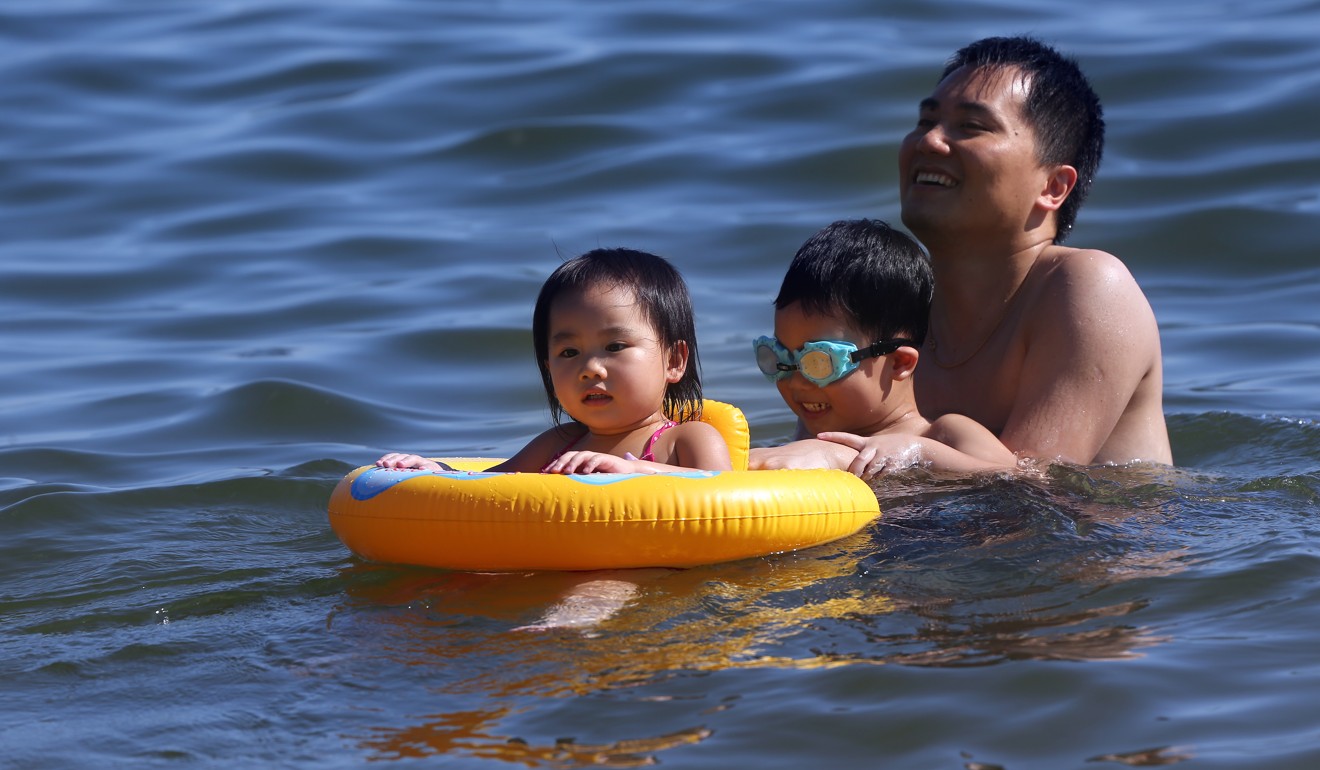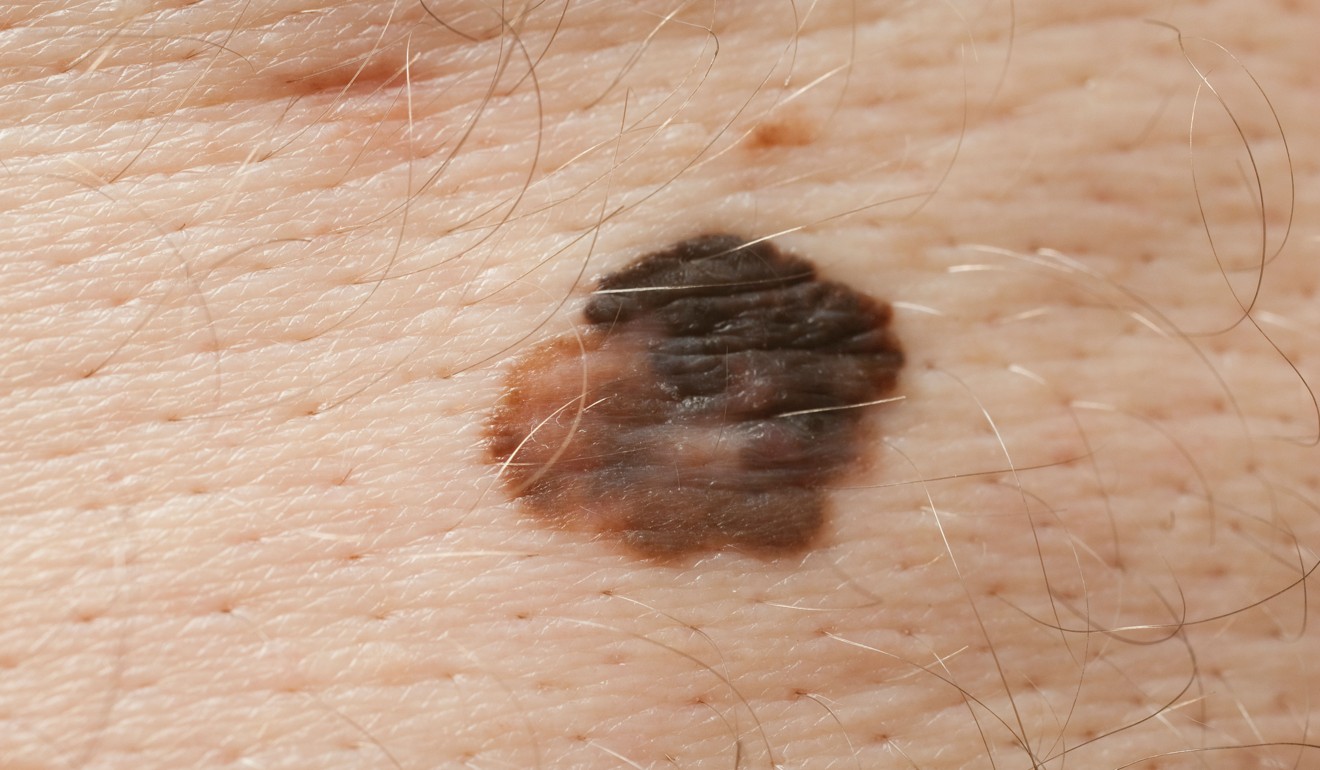
Sunscreen 101: how best to protect your children’s skin and your own this summer
Proper protection against the sun’s harmful rays not only preserves your complexion – it reduces the risk of suffering skin cancer. Here’s what you need to know about choosing sunscreens, and other steps to take for protection
I was brought up in the carefree, hatless 1970s, when caution was abandoned and sun block barely invented. My mother smeared a thick white paste called Uvistat on our noses. There was no such thing as “waterproof” and we burned often – I remember the skin on my shoulders bubbling with blisters after a particularly long day in the sun.
Forty years later and I could not conceive of such sunny abandonment of my own children’s skincare in the sun, especially given that my youngest is a redhead with skin the colour of clotted cream.
Four questions to help pick the right sunscreen this summer
I have made sun protection a life mission to preserve my children’s complexions so that they don’t look as weathered as I do come my age. Proper sun protection also decreases the chances of getting melanoma skin cancer after too much exposure to the sun, which can be a killer in worst-case scenarios.
Paediatric melanomas are extremely rare, says Dr Jennifer Stein, a dermatologist at NYU Langone in the United States, but “children do need sun protection because childhood sunburns have been linked to melanoma later in life”.
So how do you protect your children’s skin – and your own – to preserve not just a great complexion but possibly your health later on, too?

First you need to understand the sun – and specifically its rays. UV light from the sun comes in two types – UVA and UVB. UVA rays penetrate deeply, causing damage to the fundamental structure of your skin by compromising its collagen and elastin, and they are a danger all year-round, in sunshine or cloud, inside or out, because they filter through glass.
Sunburn is your skin’s way of telling you your skin has been damaged by UVB rays – which cause the most obvious damage in the skin’s superficial layers. This is where sun cream comes in. A sun cream’s SPF (sun protection factor), indicates how much protection it offers against UVB rays: the higher the number, the greater the protection offered.

Dr Stein advocates a sunscreen with at least an SPF 30. Dr Wong Shiao Yi, a dermatologist at Hong Kong’s DermaCare Central, agrees. “For daily use, according to the American Academy of Dermatology, you need to use a SPF 30 and above to protect your skin from sunburn, premature skin ageing and skin cancer,” Dr Wong says. “I would also recommend 50 for more deliberate and prolonged sun exposure such as hiking or golfing.”
She warns against using ultra-high SPF sun creams, though. “The extra protection offered by an SPF100 sunscreen as opposed to an SPF 50 is tiny, and too-high factors have been shown to lead to a false sense of security in consumers, resulting in misuse of the products.”
Five tips for runners and hikers to stay safe in hot, humid summers
She encourages her clients to look for sunscreens that offer protection against both UVA and UVB, and warns that make-up products containing an SPF should not be used instead of sunscreen because “they are more likely to be applied thinly and don’t achieve the level of protection they promise to offer and are less likely to be rub-resistant and water resistant”.
She recommends using SPF- containing make-up products with sunscreens. You need about a half-teaspoon of sun protection cream for your face and neck.
Both doctors stress that you must reapply sunscreen regularly – at least every two hours, and especially after swimming and towelling off.

But sun block is only one weapon in the arsenal available to protect our skin. As Stein observes: “You can still burn while wearing sunscreen, and I see many patients come in surprised that they got a sunburn on their chest even though they were wearing a sunscreen with an SPF of 80.
“Protective clothing is more reliable than sunscreen. A shirt is the best way to protect the chest and shoulders. I always recommend hats with a brim, especially for men without hair who get so much sun damage on the top of the head.”
My poor auburn-haired babe was slathered in block and obliged to swim in a neck-to-knee sun protection swimsuit. She didn’t mind at three, she objected hotly at 17, so then it was a bikini, board shorts, a T-shirt and hat – and the growing realisation that sunburn was sore and led to the freckles, which she hated.
Why some sunscreens may not fully protect against harmful rays
The biggest improvement in sun protection in the past few years is the wide availability of sun protective clothing for children and adults in a variety of styles and prices.
“Years ago, sun protective clothing was hard to find, expensive and not very stylish. You can now find swim shirts from many popular clothing lines in stores and online,” she says. Look for clothing with an ultraviolet protective factor (UPF) of at least 30, which will block the most harmful rays.
There has also been some hype recently over oral sunscreens – or ingestibles. “Oral supplements that contain an extract from a fern, Polypodium leucotomos, possibly make it more difficult to get a sunburn,” Stein says. But while several recent studies support this, she warns these supplements should not replace other forms of sun protection.

The US Food and Drug Administration issued a warning in May against certain companies marketing pills labelled as dietary supplements, with claims that they protect against the sun’s dangers, Dr Wong notes.
Even as sunscreen science baffles and sun protection clothing gets trendier, the adage “slip, slop, slap, seek, and slide” will always be a wise one to observe: slip on a shirt; slop on sunblock; slap on a hat; seek shelter; and slide on some good quality sunglasses to protect your eyes.
My flame-haired daughter is cool in the shade, peering over the top of her aviators as her peers wreck their skin. They’re going to look just like her mother, I think to myself.

Five skin-saving tips from the experts
1. If you’re a runner, try a sunscreen in a stick for the forehead, says Stein. “It is less likely to run into your eyes when you’re sweating like a watery lotion would. Also use sunscreens that are labelled ‘sport’, that are intended for active use.”
Apply 30 minutes before running so that it really sinks into the skin, bring it along for long runs, and reapply every hour or so, says Wong.
2. Dr Wong advocates oil-free, water-resistant formulas. Fragrance-free ones will help prevent stinging. Layer your block with chemical and mineral sunscreen; the former offers better coverage against UVA and UVB rays, as it protects by absorbing the sun’s rays, but is more irritating to the skin. The latter, which uses zinc oxide or titanium dioxide and protects by deflecting rays, is thicker but rubs off easily.
3. Read the label. Check for safe and effective (UVA and UVB) protection often cited as “broad spectrum protection”. But also check for agreeability to skin type, activity and aesthetics, like better spreadability.
Lighter textures, long lasting water protection, quick-dry ingredients, additional vitamins, antioxidants and anti-pollutants will be a factor too. This makes them more pleasant to wear so you’re more likely to use them.

4. Do not underestimate the strength of the Hong Kong sun, says Dr Wong, especially on overcast days. Always check the UV index.
5. Be especially mindful of children. Slather on sunscreen indoors, half an hour before they go outside, covering backs of necks, tops of ears, tops of feet, and back of hands. Ensure they wear sun protection clothing, a big hat and while you’re shielded from bright sunshine in your sunglasses, remember to protect their eyes, too.
Children spend a lot of time around water in the sun, remember the harsh reflection that comes from this, and keep topping up the sunscreen. Use a sunscreen with zinc oxide and/or titanium dioxide, called physical or mineral, blocks.
Are people with darker skins immune to skin cancers?
These are safer for skin than chemical-based sunscreens because they are hypoallergenic, and they won’t sting a child’s eyes. Be careful with spray sunscreens. As easy to use as they are, they can be irritating, even dangerous, if inhaled and should never be used near the face which needs a lot of cover. Water-resistant sunscreen doesn’t protect all day. It protects for between 40 to 80 minutes.

